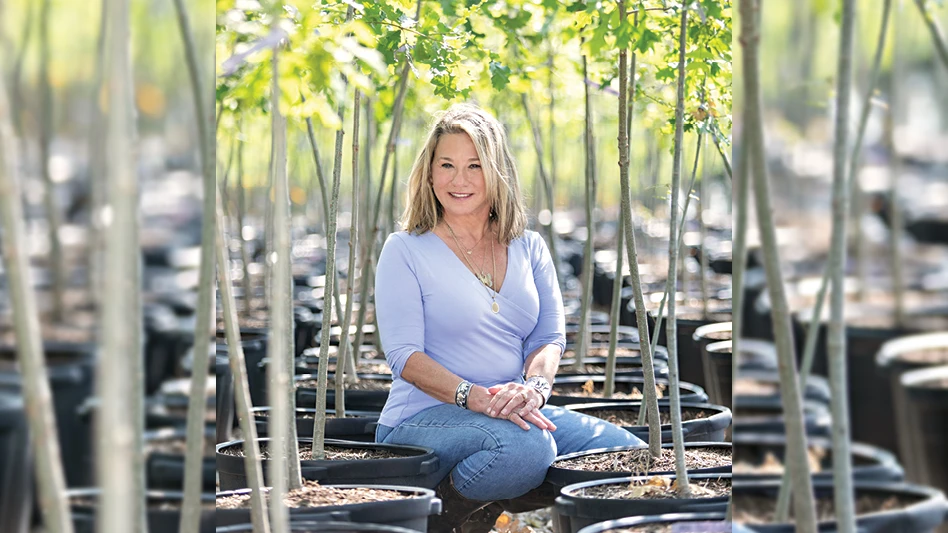
The debate between indoor, greenhouse and outdoor cultivation is a hot topic in the cannabis industry today. But there is one thing outdoor cultivators can have that is unavailable or unhelpful to the other types: goats.
“The goats serve a purpose for the grass,” says Andrew Felperin, co-owner, CEO and production manager at Apollo Grown, an outdoor-greenhouse-indoor cultivation and extraction business in Eugene, Ore. “Things grow like mad out here. Oregon trail, you know.”
Felperin lives on the farm and tends to the day-to-day of the cultivation operation while his partner Jared Dellinger, the other co-owner and head of marketing, lives in Hawaii.
The goats and other animals on the farm help with simple operations around the property: six goats act as natural lawn care specialists when they aren’t escaping from their pens; four dogs act as a security measure (although Felperin admits they do go after the odd delivery driver who forgets to check in ahead of time); and the pigs—well, they are there to be roasted during company luaus.
“I raise pigs every year so that we can have little barbecues and stuff for our employees,” Felperin explains. “After work type of fun, you know?”
Now, after retrofitting the property to accommodate a cultivation business—including renovating a horse arena into an extraction lab—Apollo Grown is hoping to make a splash in an established Oregon market with its launch of branded extracts and flower.

Not horsing around
It isn’t always fun cookouts and chasing after escaped goats, or “rascals” as Felperin calls them. After buying the farm in August 2015, he and Dellinger spent a year leasing the property to two friends to operate the farm under the state’s medical caregiver program. It wasn’t until January 2016 that the company received its license to cultivate recreational cannabis.
It took a much shorter amount of time to get the processing license, Felperin says, because the Oregon Liquor Control Commission (OLCC), which oversees the state’s adult-use marijuana program, was able to streamline the process after initial delays.
“The moment we started our producer’s license application to the moment we got it was eight months,” Felperin recounts. Almost a year after securing the producer license, the duo applied for a processor’s license. “The moment we started our processor’s license and we got that … it took about two or three [months]. So you could see within a year how much the OLCC kind of dialed in their systems to get us the licenses.”
While the owners were waiting for their licenses, they kept busy by working on retrofitting the property. The former owner was a logger, so there were a few warehouses that were well-suited to quickly convert to indoor cultivation rooms, which allowed Apollo Grown’s medical caregivers to start cultivating and getting
Then came the greenhouses. Currently, Apollo Grown operates 10 greenhouses manufactured by Oregon Valley Greenhouses: five measuring 50 feet by 20 feet, and five larger ones measuring from 20 feet by 50 feet to 20 feet by 100 feet.
The first phase of retrofitting the property was making sure the land was laid out properly. Apollo Grown’s property lies on a hill facing Northeast, which sounds counter-intuitive to grow such a light-intensive crop, but Felperin says it works great for the operation.
“We definitely get exposure—a ton of exposure during the middle of the season. Like right now, we’re getting probably 13 or 14 hours of sunlight on these suckers,” he says. “As the seasons change …, it starts to get a little more shaded here, which we kind of like. It kind of tells the plants to hurry up and finish.”
To maximize the available light, the team worked the land into three tiers: Driving past the front gates of the farm will lead visitors to the first tier: the warehouses containing the indoor grow operation. Past that are the greenhouses and outdoor plants. Continue past that, and visitors will find the horse arena, which has been converted into an extraction lab.
Apollo Grown cultivates its crops in soil amended with beneficial nematodes and

Efficient farming
According to Felperin, two of the biggest considerations in retrofitting the farm were water and electricity. Water was not an issue for the group: Streams, a well and rainwater collection give Apollo Grown all the water it could need. Having multiple sources of water also means that Felperin is not over-using any one source, which fits into the company’s resource efficiency and sustainability plan. The roof-runoff especially works in the company’s favor.
“In Oregon, you are legally allowed … the water runoff off of the roof [of permitted buildings for] free [for] storage and usage. They consider that your water,” Felperin explains. “Our barn is pretty massive. I would say it’s a 15,000- to
Oregon can receive quite a bit of runoff during both the summer and winter. Apollo Grown collects and stores that water in aerated tanks to keep it from going stagnant. Felperin says that the farm can collect more than 2,000 gallons of rainwater by the time the outdoor growing season rolls in.
As for electricity, growing outdoors and in greenhouses allows the group to cut down on a lot of energy needs. The only true lighting need is in the indoor facilities. Apollo Grown uses 680W Fluence Bioengineering SPYDRx Plus lights. Felperin says using LEDs is the best way to cut down on power without affecting yield or quality. He recounts how a dispensary owner asked him questions about Apollo Grown’s
“We didn’t use any CO2 or anything, and we still got about a pound-and-a-half [per] light, which was really awesome,” he says. “They give us pretty much the exact THC content, the exact weight … but they save us a lot more in our energy costs.”
Felperin also uses gravity-feeding tanks instead of electric pumps to feed his crops. By putting the tank higher than where the irrigation lines run, gravity pushes water through the lines when the valve is open.
Water, electricity and security requirements should be considered together, he continues, not as separate components. A common mistake he has seen people make when retrofitting a farm for outdoor cultivation is completing steps one-by-one instead of all at once. For example, digging trenches in which to run electric lines, filling them in and then realizing you need to run water lines across the property.
“That hole you dug for the electric, you could have put a pipe in for water. … Or [the] same with your cameras,” he says.

Cost of doing business
While operating outdoors and using energy- and resource-efficient processes has allowed Apollo Grown to cut costs, some expenses cannot be curbed. For the Oregon company, a lot of the cost came from retrofitting the horse arena into an extraction lab.
“To have everything in line, from the machines to the material to the spot, the land that you’re doing it on, the property, to the mistakes and errors that are made—and they are made—I would just say it would be not wise to think that it wouldn’t be a six-figure cost to start. And it has been for us,” Felperin says.
The first step to retrofitting the arena was epoxying the floors to seal away any potential dust or other contaminants. Having a clean working environment was not a priority for horse trainers, but is crucial to a cannabis cultivation, especially an extraction-first company like Apollo.
The next big expenses are
“It took a little time, Felperin says. “But I would say those are the numbers roughly we were working
“Packaging for 500 [pieces] could cost [around] $7,000. But for 5,000 of them, it’s $10,000,” he says.
For more: apollogrown.com
Brian MacIver is associate editor of Cannabis Business Times, a GIE Media publication. This profile originally appeared in Cannabis Business Times.

Explore the April 2018 Issue
Check out more from this issue and find your next story to read.
Latest from Nursery Management
- The HC Companies, Classic Home & Garden merge as Growscape
- Eason Horticultural Resources will now officially be known as EHR
- BioWorks receives EPA approval for new biological insecticide for thrips, aphids, whiteflies
- Ellen Mackenbach-Lakeman appointed new CEO of Dümmen Orange
- Southern Garden Tour sets 2025 dates for trial garden open houses
- New book explores plants that thrive in Rocky Mountains
- American Floral Endowment establishes Herman Meinders Memorial Tribute
- These companies are utilizing plastic alternatives to reduce horticultural waste





